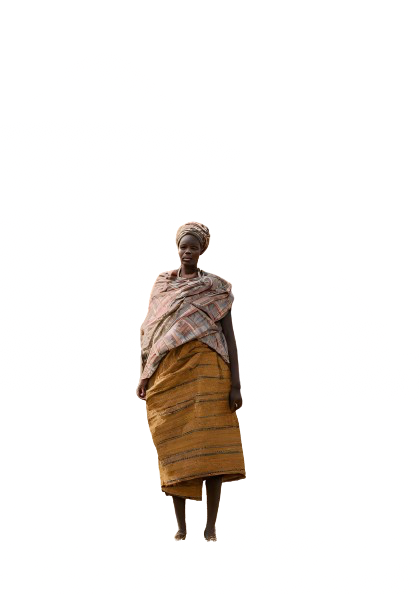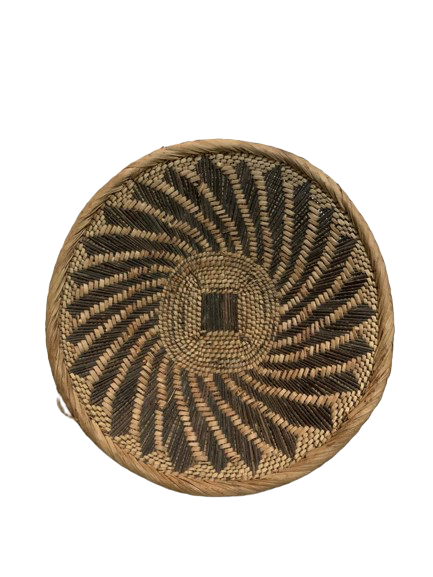Character stories
Character Stories is driven by the visceral need to attribute and reconstitute the instrinsic, non-exploitable value of baTonga women. It also exists as a direct challenge to the normative visual conceptions and projections of baTonga women found in the mainstream archive. baTonga women, in contemporary and historic visual culture, are often presesented as products, subjects or objects which exist as part of largely asymmetrical visual corpus mostly cemented by the western schools of Anthropology/Ethnography. Schools of thought whose foundational theories (and legitimacy in many ways) relied on the camera’s ability to capture curated scenes which corroborated the pre-conceived and often violent hypotheses of their carriers.
A number of photographs or videos of baTonga women which exist in the archive, mostly in public museums or private galleries in the occident, are often subtitled with the text “photograph of an unknown woman” and are devoid of any further data which alludes to the very core or centre of the photograph. This approach, renders baTonga women appedages of oppressive histories and narratives as opposed to autonomous agents of free will.
Character Stories challenges this gap in the documentation of dignified existences of baTonga people by virtue of being presented or written as people with recognizable and traceable names, extensive stories, timelines, families, hobbies etc.
Part of Character Stories has been inspired by ‘Masters of Ceremony’ a presentation shared by Rob Marriott (Author, DJ & Filmmaker) at The Center for Black Visual Culture (NYU) on the 27th of March 2024.
In the presentation Mariott who is speaking on Hip-Hop’s Impact on Black Visual Culture describes the genre, in the context of the Bronx, as being “a body of psychological technology which creates a resurrection of liberation and intent…one which is rooted in the tradition of what black people have done all throughout these 400 years of oppression. This is to story tell, to live in story and to create characters that convey the information to negotiate that oppression”
He brings into context the charcater of Br’er Rabbit (or Peter Rabbit), a popular storytale figure rooted in African American oral traditions, which can be traced to the myriads of Bantu speaking people who were enslaved en masse and loaded onto ships bound for a land in which cultural violences and silences were abundant. As a means of maintaining their integrity, their humanness, the connection to their homes and their ritual expressions, they carried with them, across the seas their stories, songs and teachings of Sulwe (ciTonga), the rabbit.
In the parallels of baTonga and African American storytelling, Br’er rabbit/Sulwe uses his vivid imagination to constantly rebel against a hegemonic (and often oppressive) system which tirelessly and ceaselessly tries to box him in. By the end of the tale, which often has twists, turns and cascading dips and peaks, Sulwe/Br’er Rabbit always escapes by the skin of his teeth, but with exactly what it is he was after.
“..with his wit and intelligence, he creates word magic which is really the root of Hip-Hop. He’s the original glitch in the scarcity matrix”
TITLE
Maanu a Sulwe
AUTHOR
Bruno Mwiinga
FILE
LANGUAGE
Tonga
PUBLISHER
National Education Company of Zambia Ltd.
YEAR
1974
SOURCE
illustrations from Maanu a Sulwe
translation
WE WERE IN TIMES OF WAR
Years had gone by, the animals were still in times of discussion, they wanted to form a community and live together. In their midst, was Sulwe who looked like he had a sense of intelligence that could outwit them all.
Character Stories aims to be a glitch in the scarcity matrix. All the characters are written as rebellions against a system which attempts and fails to subjugate their roots, their ritual expressions of telluric practice.
Namatete is a Banyama (basket weaver) and a Sikatongo (earth priestess) who was born on a warm October afternoon in Nampeyo in a year not a single soul can confirm. Nampeyo is a village which lies on the edge of the Zambezi Escarpments, where the plateau has just begun to break into the escarpment (E. Colson, 1958) Located to the northwest of the village is Nazyaando Hill which gives way to Chisoboyo Hill on the east and Jalata River to the north. (M.C Chona)
Namatete and Namaliketi Pictured in front of their hybrid Silo-Homes designed by the local vernacular architecture studio located on the southern edge of their village.
Her name, given to her by her great-aunt, means Mother of the Reeds. A sign she was to become Banyama.
As a Sikatongo, she has the ability to understand the syntax of the land and the trees, the ways of the water and the animals. Namatete’s companion is Nakakolyo, the Goliath Heron, which visits her in her mystical abode. Her element is that of wind, which she harnesses through iguwo a basketry pattern she learnt in the village of Munyumbwe in the Gwembe Valley, during a trip she made with her sister Namaliketi to trade animal skins for the cotton grown by the Valley Tonga.
Namatete
The 2032-2055 society Namatete lives in is non-hierarchical as a further reindigenisation of systems. Although this may be, she is a well respected and valued member of the community as the first think-tank session took place in her basketry studio.










